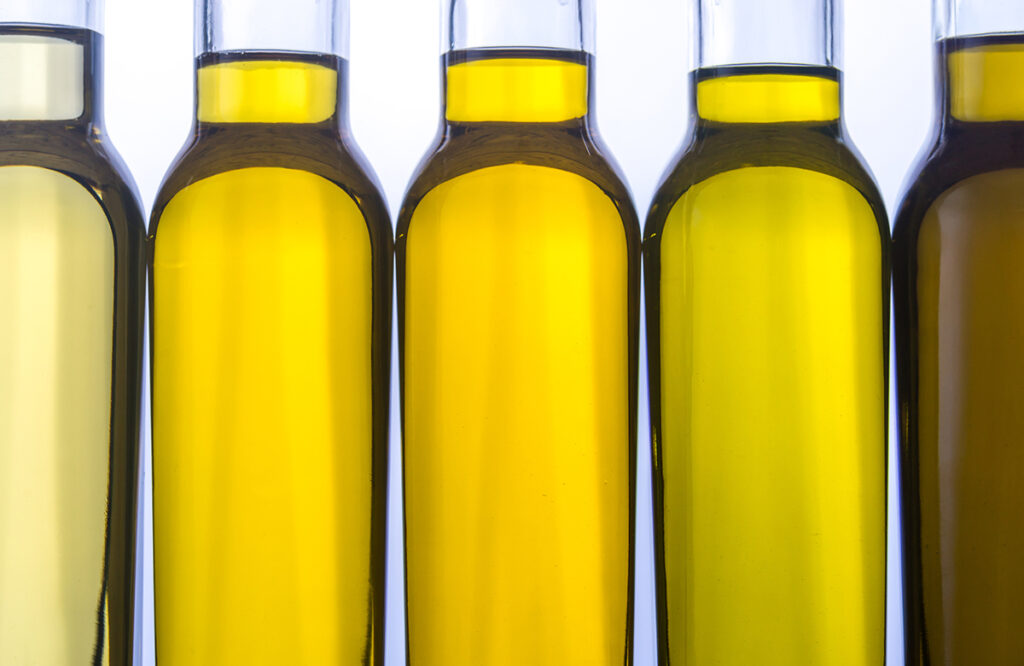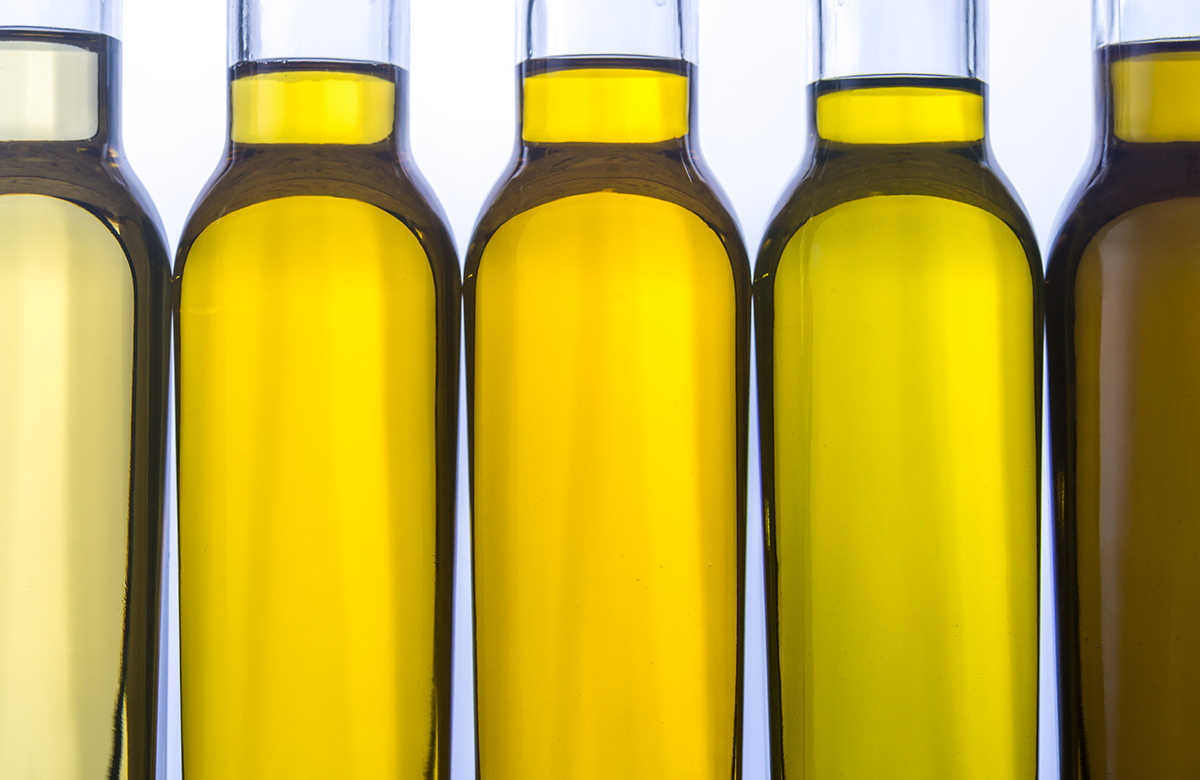
The ultimate goal of pressing oilseeds is to separate the oil from the solid seed material. Even in the most efficient processing plants, the oil leaving the press could still contain up to 10-20% solids by weight, which impacts the final product quality. Processors have a few options to remove these remaining particles and clarify their oil. The decision generally comes down to either a pressure leaf filter or a decanter centrifuge.
At most oilseed processing plants, the clarification process begins with gravity. Oil from the screw press is pumped into large settling tanks where gravitational forces gradually pull solid particles down to the bottom. Vibratory screens shake out these solids so they can be removed and recycled back into the press. However, even after this step, most oils still contain at least 5% solids by weight. This tank feeds into a decanter or filter system to further clarify the oil. But which one is better?
When choosing the best oil filtration system for your operation, you must consider factors including upfront cost, ongoing maintenance, energy efficiency, and quality requirements. Let’s compare the pros, cons, and prices of both systems to guide you toward the right solution.
Option 1: Pressure leaf filter
A pressure leaf filter consists of several filter leaves stacked inside a sealed, pressurized vessel. As oil is pumped through the vessel, it passes through these leaves, which are covered in layers of fine mesh stretched across a frame. These filters trap solid particles as they gradually build up on the leaves, forming a filter cake.
A typical cycle lasts approximately two hours. At that point, the cake must be removed to clean the filters for the next cycle. The most common method for removing this sediment is to blow air through the leaves, then shake the solids loose with a vibrator. These residuals can be pressed again to squeeze out even more. However, the fine particles can be difficult to press, so they’re often left in the finished meal cake to boost the fat content.
Some smaller processing plants use a traditional plate and frame filter, similar to a pressure leaf filter. These processors must manually scrape the sediment from each plate using spatulas. This method is more labor-intensive but offers a lower-cost solution for cash-strapped operations.
Advantages of a pressure leaf filter
- Fine filtering
The leaf’s fine mesh filters capture even the smallest particle sizes, resulting in cleaner, higher-quality oil with only 0.1% solids by weight. When pressing oil for human consumption or other markets that have demanding quality standards, this boost in quality can be priceless.
Pressure leaf filter limitations
- Equipment cost
Pressure leaf filters carry a higher equipment cost than decanters, and the machines take up a much larger footprint. These costs, in terms of both capital and space, can be important considerations for a processing plant.
- Operational burden
A pressure leaf filter system requires constant attention to operate because the filters must be unloaded, cleaned, and reloaded after each cycle to remove build-up. Frequent handling creates more opportunities for issues and errors to occur, increasing the potential risk that accompanies this method.
Also read: Endless Support from Anderson International Aftermarket Services
Option 2: Decanter centrifuge
Decanter centrifuge systems rotate rapidly to create high centrifugal forces that separate the solid particles suspended in pressed oil. As the decanter spins, the centrifuge drives denser solid particles against the outer wall of the unit, separating them from less dense oil. The solid material exits the decanter through a discharge opening while the clarified oil is pumped out.
Advantages of a decanter centrifuge
- Ease of operation
Decanters run continuously, so processors don’t need to shut down the equipment every few hours to remove the sediment manually, as with a filtration system. From a labor perspective, a decanter centrifuge is easier to operate because it demands less attention and manual labor. Additionally, decanters are less expensive and take up less floor space, making them simple to integrate into an operation.
Decanter limitations
- Particle size
The biggest downside of using a decanter centrifuge is that it only removes particles down to 5 microns in size, so it’s slightly less effective than filtration. Smaller sediments stay in the oil, which can still contain 0.5% solids by weight after it leaves the decanter. A few tenths of a percentage may not seem substantial, but depending on your target markets, this small differential can significantly impact the value of your oil.
- Maintenance costs
Due to the speed at which it spins, a decanter centrifuge can wear through parts much faster than a filter. These heavy-duty parts can be expensive to replace — especially bearings, which typically wear out within a couple of years. Although decanting equipment is less expensive upfront than oil filtration systems, these ongoing maintenance costs can add up quickly.
- Energy usage
Decanters require motors to keep the shaft spinning. The system uses more electric energy than oil filtration, which consumes about 60-75% less energy. Processing plants that prioritize energy efficiency might lean toward pressure leaf filters instead.
Also read: Critical Elements Behind Successful and Complete Processing Systems
Which oil filtration system to choose
When choosing between a pressure leaf filter and a decanter centrifuge for your oilseed processing plant, you must weigh the cost considerations against the benefits and drawbacks of each system.
For example, suppose you’re supplying edible oil for human consumption or selling it to a refinery with high-quality specifications. In that case, you might choose a pressure leaf filter to ensure that you’re providing the cleanest oil possible—especially since some refineries penalize you for excessive residual solids.
More processors gravitate toward decanters because they’re less expensive to install and easier to operate. In any case, the system you choose must integrate seamlessly into your overall processing environment. Choosing the wrong oil filtration system for your operation can add unnecessary costs and inefficiencies for years to come, so it’s essential to seek an experienced guide to help you navigate this decision.
The oilseed processing experts at Anderson International have seen the pros and cons of both systems firsthand as we’ve helped processors design more efficient, cost-effective plants around the world. We can help you analyze these options to find an ideal solution to streamline your operation and optimize your end product.
Contact Anderson International today to gain clarity on your oil filtration options.
